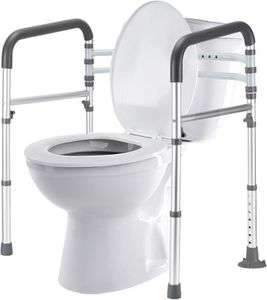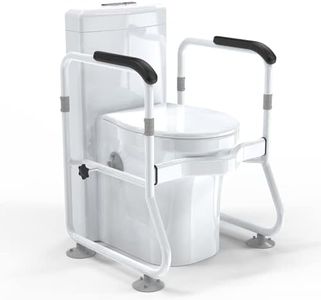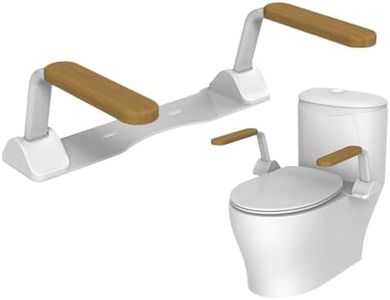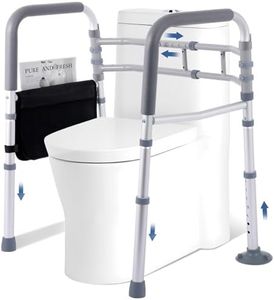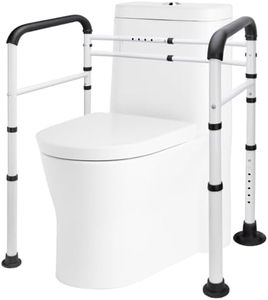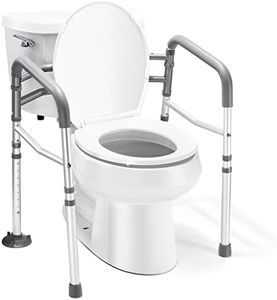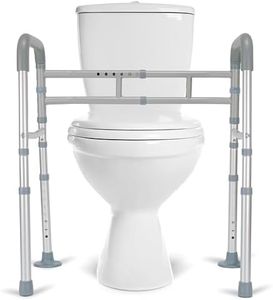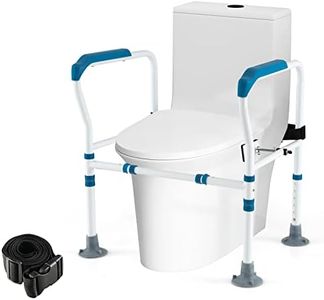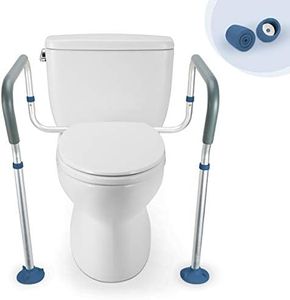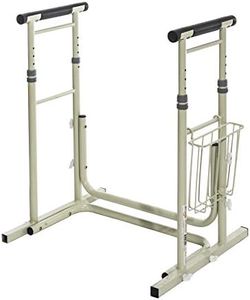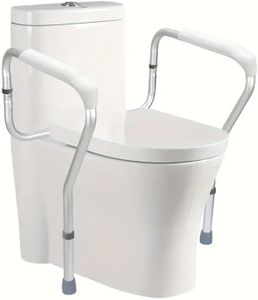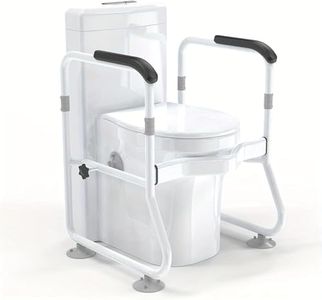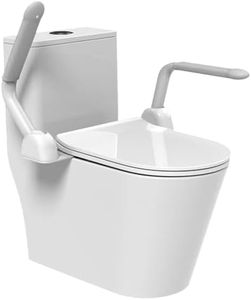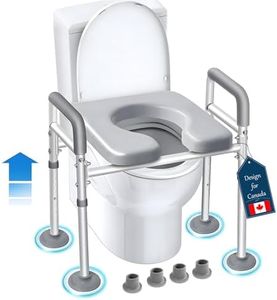We Use CookiesWe use cookies to enhance the security, performance,
functionality and for analytical and promotional activities. By continuing to browse this site you
are agreeing to our privacy policy
10 Best Toilet Rails
From leading brands and best sellers available on the web.Buying Guide for the Best Toilet Rails
Choosing the right toilet rails can significantly improve safety and confidence in the bathroom, especially for individuals with limited mobility, seniors, or those recovering from surgery. Toilet rails provide support when sitting down or standing up, helping to prevent slips and falls. Selecting the best fit involves understanding the environment they'll be used in, the user's mobility level, and comfort needs. It's important to look at the design, sturdiness, ease of installation, and adjustability, so the toilet rails truly meet the user's requirements.Weight CapacityWeight capacity refers to the maximum weight the toilet rails can safely support. This is crucial for safety, as exceeding the weight limit risks the rails bending or failing. Weight capacities typically range from around 250 to over 300 pounds. For lighter users, most standard rails are sufficient, but heavier or bariatric users should look for rails with higher weight limits. Always choose rails that comfortably exceed the user's body weight for extra security.
Mounting StyleMounting style describes how the toilet rails are attached—either freestanding, attached to the toilet, or wall-mounted. Freestanding rails stand independently and are easy to install and move, suitable for temporary or adjustable setups. Toilet-mounted rails attach directly to the toilet, often using the seat bolts, providing stable support and making them a good middle ground. Wall-mounted rails are fixed into the wall and offer the sturdiest support, ideal for users needing maximum stability. Your choice should depend on the user’s strength, balance, and whether you want a portable or permanent solution.
AdjustabilityAdjustability refers to the ability to change the height and sometimes the width of the rails. Adjustable rails can be customized to match the user’s body size and particular comfort needs, making sitting and standing more natural. Some rails also allow you to change the width to fit different toilet sizes. If the rail will be used by more than one person or if the user’s needs may change, adjustable features offer greater flexibility.
MaterialToilet rails are usually made from materials like aluminum, steel, or plastic. Material affects both durability and comfort. Steel rails are strong and sturdy but may be heavier, while aluminum rails are lightweight and often rust-resistant. Some rails have padded or textured grips for extra comfort and slip resistance. Consider material based on the user’s grip strength, bathroom humidity, and how often the rails will be moved.
Rail Design and ComfortRail design encompasses the shape, padding, and overall ergonomics of the rails. Some are curved for easier gripping, while others are straight. Padded or textured handles can increase comfort and prevent slipping, which is especially beneficial for users with weak grip or arthritis. Think about how easy the rails are to hold and whether the design feels natural and secure when the user is getting on or off the toilet.
Ease of InstallationThe ease of installation is important, especially if you want to set up or remove the rails without professional help. Freestanding models are typically the simplest to install, while wall-mounted options may require drilling and more permanent modifications. Think about your comfort with tools and whether you need something portable or something that stays in place.
